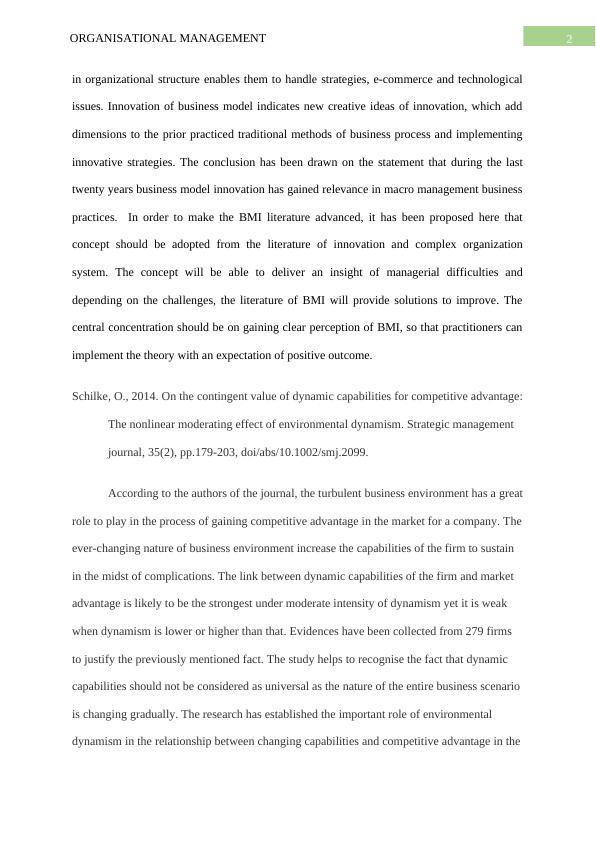Factors Influencing Managers' Decision Making: An Annotated Bibliography
Compile an annotated bibliography of five recent (2014-2018) peer reviewed journal articles from a provided list of journals.
8 Pages2239 Words404 Views
Added on 2023-06-09
About This Document
This essay analyses five journals of management and business studies to develop an understanding of the factors that influence managers while taking business decisions. The essay discusses five major factors as described in the journals, such as organisational governance, environmental forces of the market, business risks, organizational practices and diversity, as well as how these factors control the firms’ performance.
Factors Influencing Managers' Decision Making: An Annotated Bibliography
Compile an annotated bibliography of five recent (2014-2018) peer reviewed journal articles from a provided list of journals.
Added on 2023-06-09
ShareRelated Documents
End of preview
Want to access all the pages? Upload your documents or become a member.
Management and Business Context
|10
|2365
|194
Exploring Business Management Topics from Renowned Journal Articles
|11
|2294
|427
Importance of Contextual Factors in Organizational Decision-Making: An Annotated Bibliography
|9
|2219
|330
Management and Business Context
|11
|2082
|68
Nature, Meaning and Scope of Organisational Theories
|10
|2694
|447
Organizational Structure and Culture: Toyota, Nestle, Coca-Cola, Unilever
|10
|613
|218



